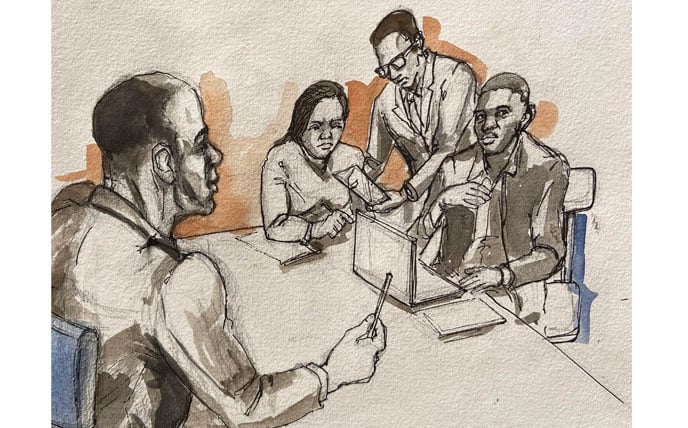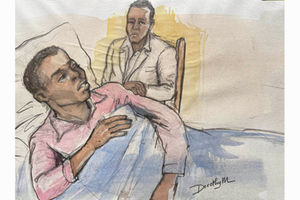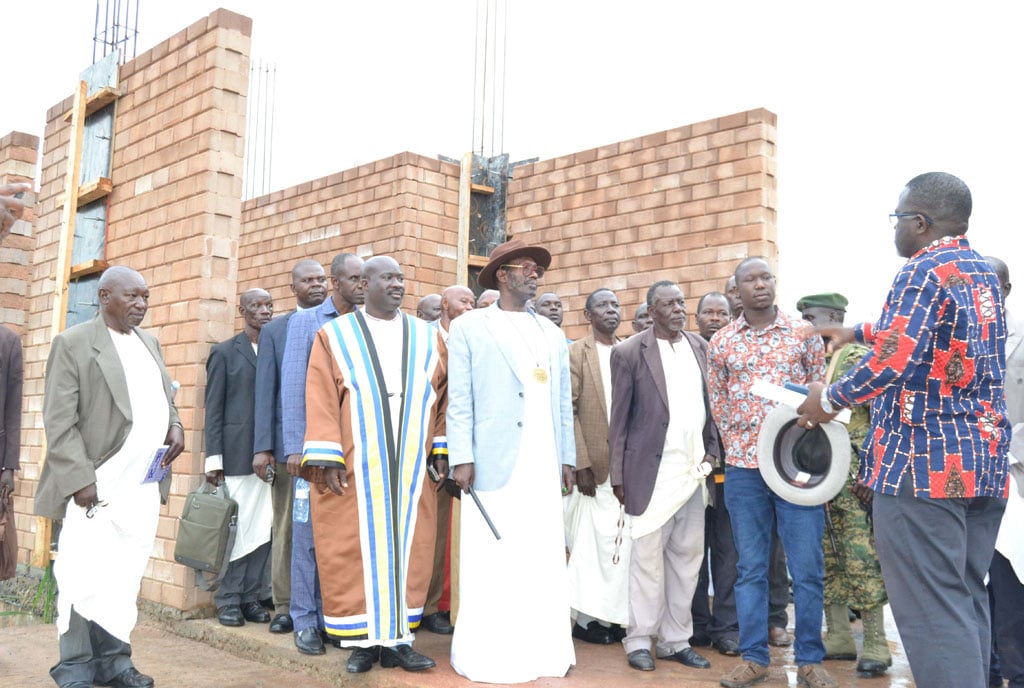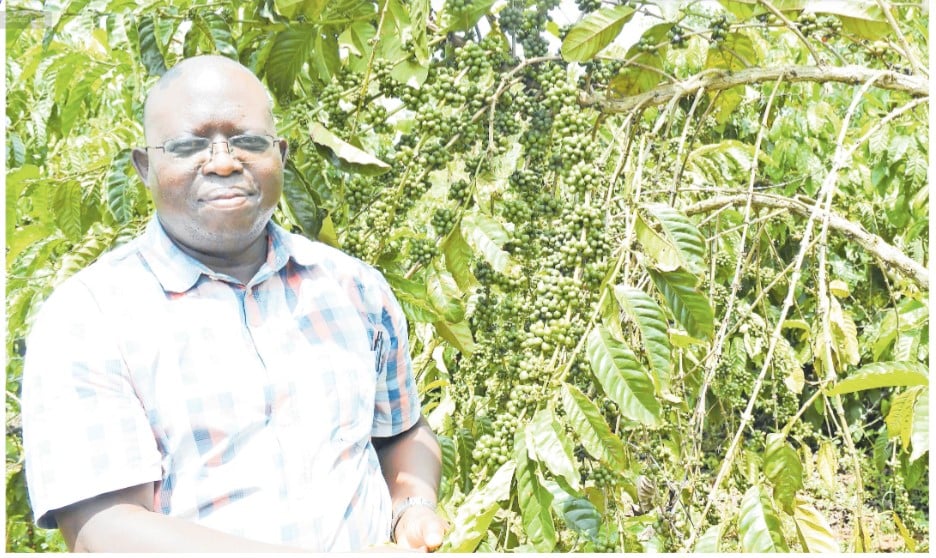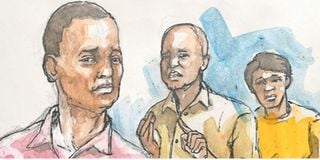
On February 20, 2024, the court passed judgment on and sentenced one Richard to 44 years of imprisonment, less the two years and 29 days he spent on remand. He had been tried in the Criminal Division of the High Court for the murder of his half-brother although; to date, he pleads his innocence. It is, however, more than likely that he was framed.
Richard’s half-brother, a university student died, on May 15, 2021, and was buried without a postmortem examination. He died at a renowned hospital and the cause of death, as stated in the death certificate, was acute pancreatitis.
The deceased was also found to have tested positive for the Corona virus, while in hospital. The court, however, came to the conclusion that the actual cause of death was poisoning from Carbofuran, a pesticide that was found in his body after exhumation.
Evidence before the court was that this substance is so toxic that it causes death within a short time, something court called acute death. Court baptised the judgment as the “shrinking forest” in reference to a proverb Richard is said to have used shortly after the death of the his half-brother.
The proverb was “A forest is shrinking, but the trees keep voting for the axe. The axe was clever and convinced the trees that because his handle was made of wood, he was one of them”. The family interpreted this to mean “You cannot know what is finishing you because it is among you”.
The lawyers for the accused asked for a lenient sentence after his conviction and the mitigating factors were that he was a family man with children and had a sick wife. He was the sole breadwinner of the family and their source of livelihood.
Although Court noted that the accused did not have any criminal record, it considered the offence serious. The maximum sentence for murder is death, but the sentencing guidelines provided, in the schedule, a minimum imprisonment for 35 years and a maximum sentence of death.
Was a deterrent measure necessary?
According to the court, this case of a brother killing a brother was unique. Court concluded that this kind of criminality had the capacity of wiping out the entire family, which action needed to be checked through a deterrent sentence.
If such killings are not checked, then children will begin to take the lives of their parents and possible competitors on account of the wealth in the family. Court noted that the accused had demonstrated that he was a dangerous man if left at large. The accused deserved a deterrent sentence, which prosecution should have asked for.
The lawyer for the accused person called one doctor to testify in respect of the cause of death. Court says the doctor contradicted the evidence of other doctors, who attended to the deceased, especially on the issue of the Corona virus test could not explain why the protocols for the Corona virus were not applied in the Intensive Care Unit and during the burial.
The doctor also told court that it is possible for doctors to get a diagnosis wrong and court pounced on this fact to rule that this appeared to be the situation in this particular case. Court concluded that the doctors were perplexed during the cross examination as they tried to find out the cause of death.
The assessors of the case noted that prosecution had proved beyond reasonable doubt that the deceased had poisoned by his half-brother, who was the accused before court.
To court, prosecution had adduced evidence that Richard had been positively identified as the person, who gave poison to his half-brother. It was the evidence of the father of the two brothers that on March 14, 2021, Richard bought a drink for the deceased and that he (their father) saw Richard stirring the drink and that when he asked Richard to taste what he had given his half-brother, he (Richard) refused. The father further testified that the deceased started falling sick four days after taking the said drink.
Richard’s stepmother corroborated her husband’s story; that on the night in question she saw Richard in the place where drinks were being mixed and they saw him stirring something in a glass and they did not know what he was stirring.
Correct identification
He then brought the drink to the deceased who took it. Four days after taking the drink, the deceased called her and told her that he was not feeling well; that he was feeling fire in his stomach. She gave him some money and he went to the hospital where he was given some medication.
Court had to determine whether the two witnesses were able to recognise the accused. In circumstances of this nature, court is required to warn itself of the dangers of acting on such evidence and only do so after being satisfied that the correct identification was made which is free of error or mistake.
In so doing, the court considers whether the witnesses are familiar with the accused, whether there was light to aid visual identification, the length of time taken by the witnesses to observe and identify the accused and the proximity of the witnesses to the accused and the time of observing the accused.
With regards to familiarity, to court, the witnesses both knew the accused prior to the incidence since he was their son. In terms of proximity, both witnesses saw the accused mixing and stirring the cocktail drink for the deceased at a distance of fifty meters which was near enough to them to recognise him and see what he was clearly doing. In terms of light, it was during the night at around 8:30pm and the vision of the witnesses was not obstructed and their vision was aided by the lights that were all over the place.
Details of the sentence
As regards to duration, the identification took a reasonable period of time, which was long enough to aid correct identification. The investigation officer also visited the scene of the incidence and saw the place where the witnesses were seated and measured the distance which was about 26 meters away.
During the sentencing of Richard, the right to appeal the judgment and sentence was explained to him. There is no doubt he will appeal this judgment and sentence. Central to the appeal will be whether prosecution proved beyond reasonable doubt the deceased died of a poison or of natural causes.
The evidence on record is that the poison, a pesticide, that was alleged to have caused the death of the deceased acts with a short time and causes acute death. How then can such a poison given on March 14, cause death two months later, on May 15 and court does not explain this?
The report of the pathologists who exhumed the body was inclusive and they recommended further tests, which were not carried out. The deceased never presented with signs and symptoms typical of poisoning by the pesticide, which signs and symptoms were clearly mentioned in court. Can this judgment, in truth, be baptised the shrinking forest of justice?


